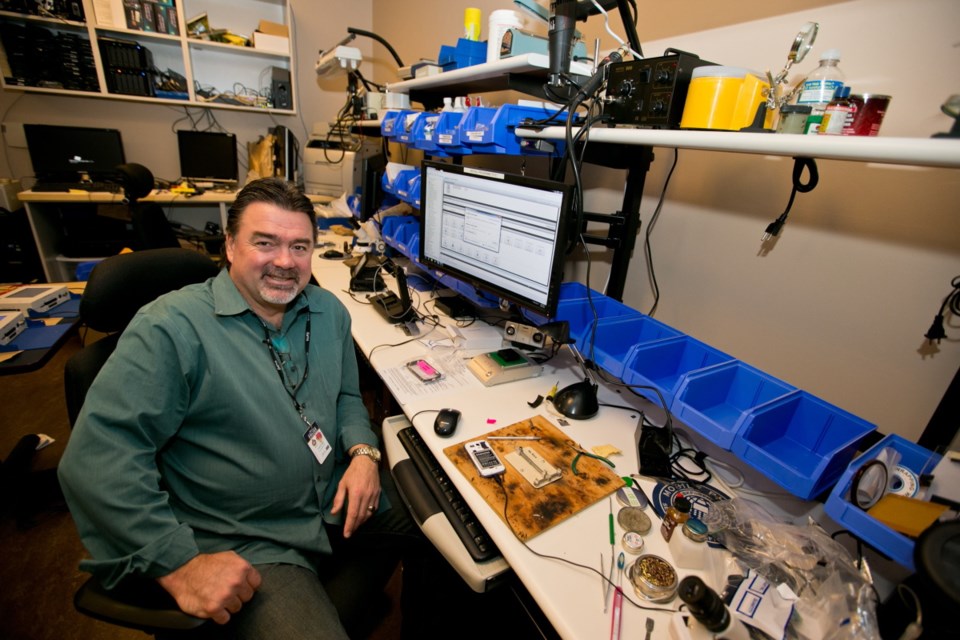The work of forensic investigators is glamourized by television shows such as CSI and Dexter, but rarely does the public get a glimpse of real-life crime-solving techniques.
Two Greater Victoria forensics officers are revealing some of their investigative secrets after being recognized with an international forensic science award.
Retired Victoria detective Bob Elder and Saanich Const. Shane Coughlan received the Vollmer Award from the International Association of Chiefs of Police in Philadelphia last month. The award honours proactive, innovative uses of forensic technologies by law enforcement.
Elder was recognized for a method of recovering data from devices, while Coughlan found a way to identify fingerprints covered by pen ink.
Elder developed a new method for local police departments to recover data from cellphones, circuit boards or computers that have been destroyed, password protected or wiped clean.
Elder said federal police across North America were able to recover data, but it cost of tens of thousands of dollars and took up to two years for specialized labs to process the evidence. He developed a cost-effective way for local departments to recover data for about $5,000.
The technique was crucial in securing a conviction against Trevor Leonard Landry. The Victoria man pleaded guilty this year to sexually assaulted his four-year-old daughter.
Landry had destroyed his cellphone, knowing police were coming to arrest him, but Elder was able to recover data from the memory chip.
“I was always a computer geek, ever since I was a kid,” said Elder, who joined VicPD’s forensics department in 2006.
Elder now runs a private lab, TEEL Technologies, which takes cases from around North America.
Coughlan, a 14-year veteran with Saanich police, developed a technique for identifying fingerprints, even when obscured by pen ink.
A few years ago, the department was investigating a series of bank robberies, he said. A note had been left behind, and while the robber was wearing gloves when he handed the note over, he didn’t have them on when he wrote it.
“A lot of times they think ‘I’m wearing gloves’ but they don’t realize we can get fingerprints from the paper which they handled without gloves,” Coughlan said.
Coughlan used acetone to fade the pen ink without degrading the fingerprint. “It made the ink disappear enough without the fingerprint disappearing.”
The technique can also be used in other cases, he said — for example, if officers seize a bag that contains notes.
Coughlan published his findings in the Journal of Forensic Identification in 2012 so the technique could be used by police departments around the world.
“I always had a strong interest in crime scenes and figuring them out,” Coughlan said. “Most [crime scenes], once you’ve done it for a while, you go in there and they tell you a story of what happened.”
Both officers agree that television shows like CSI give people high — and sometimes unrealistic — expectations of what forensics officers in local departments can do.
“I think those shows have increased awareness of some of the things we can do at crime scenes,” Coughlan said. “But it’s also really raised the expectations of what we will do. Some of the stuff they do is highly unlikely or not possible.”
The two local officers were selected from hundreds of submissions around the world, said Saanich Police Chief Mike Chadwick.
“The fact that two officers from the Greater Victoria region were selected to receive awards in forensic discipline is extremely unique,” Chadwick said. “Both Shane and Bob should be proud of their achievements.”



